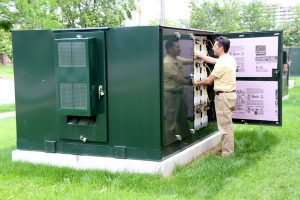If you haven’t been living under a rock, you will have heard that power bills have increased significantly over the past month due to the increasing cost of energy. New tariffs have taken effect as of July this year sending many into a tailspin. Energy bills increased by up to 25%[1] in some states, including South Australia, and combined with rising interest rates, spiralling mortgage or rent costs, and the increase in other expenses, many households and businesses are feeling the pinch.

You can often get a better energy price by shopping around
Why have the prices gone up so much?
There are many reasons for the price hikes, but one major reason is the war in Ukraine[2]. The war has negatively impacted the price of wholesale gas and coal as Russia restricts the export of natural gas causing prices to quadruple in the last 2 years[3]. Retail prices almost always reflect of the wholesale price, so both will continue to rise as the conflict applies pressure to the region.
Another reason for rising prices is the cost of replacing existing infrastructure which is aged and no longer efficient. Think of the power outages we sometimes have in the hot weather. As our climate gets hotter and people crank the air-conditioner we put more strain on the infrastructure. It will only get worse. It makes sense, since we must replace aging electricity generators anyway, to invest in new solar and wind farms rather than coal fired power stations which will have to be phased out after only a few years if we are to meet our global net zero targets. Whether we replace these aging structures with new renewable power generators or repair existing infrastructure, the costs will be significant and this is reflected in our energy prices at network providers try to recoup some costs.
What is being done?
According to the Australian Energy Regulator, this latest price increase is only half of what we should have experienced if it were not for the price caps imposed by federal government on gas and coal which helped to lower wholesale costs.
The federal government, as part of the Energy Bill Relief Plan, is providing energy rebates to households and small businesses to offset these price increases. The rebates will be automatically applied to power bills for eligible customers[4].
What can you do?
Renewable energy is typically cheaper than fossil fuel-based energy, since there are very few ongoing costs once it’s built; when the sun shines or the wind blows, energy is generated. If you can’t install solar on your home or business and invest in a battery, there are a number of innovative retailers offering pricing tariffs which reflect the lower cost of solar energy. We particularly like the offerings from small South Australian retailer iO Energy, so much so that we now have access to their billing assessment software and can let you know if their pricing offer will work for you. More about how you can save with iO Energy can be found here.
In general, how much you pay for energy depends on your retailer and what sort of a plan you are on. Don’t be afraid to shop around. A great website to help with this is Energy Made Easy, a Federal government operated website which uses real data from your bills to help you compare your prices to that of other retailers. The second point of call should always be your retailer. Phone them and ask what they can do for you, and don’t be embarrassed to quote your research from the Energy Made Easy website and see if they will price match.
If you currently have gas appliances in your home check out the Climate Council’s savings calculator which can show you the savings that you can make by switching gas appliances to electricity.
Ultimately, we will be living with these higher energy prices for the foreseeable future, so your best option to reduce bill shock is to curb your energy use where possible, shop around for a better price, and invest in renewables. Hopefully, sooner rather than later, South Australia will be running on 100% renewable energy for 100% of the time, and we will not be dependent on the fluctuations of the global wholesale price of gas and coal. We will only be paying for the cost of repairing infrastructure such as power lines and installation of community batteries to store locally produced solar energy.

A community battery - Image by David Dodge, Green Energy Futures
